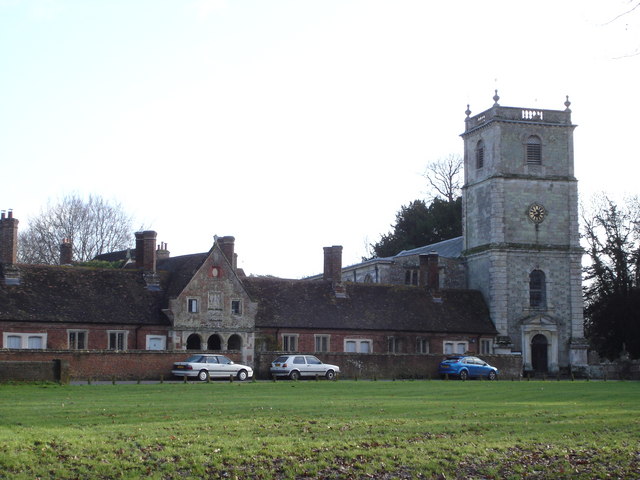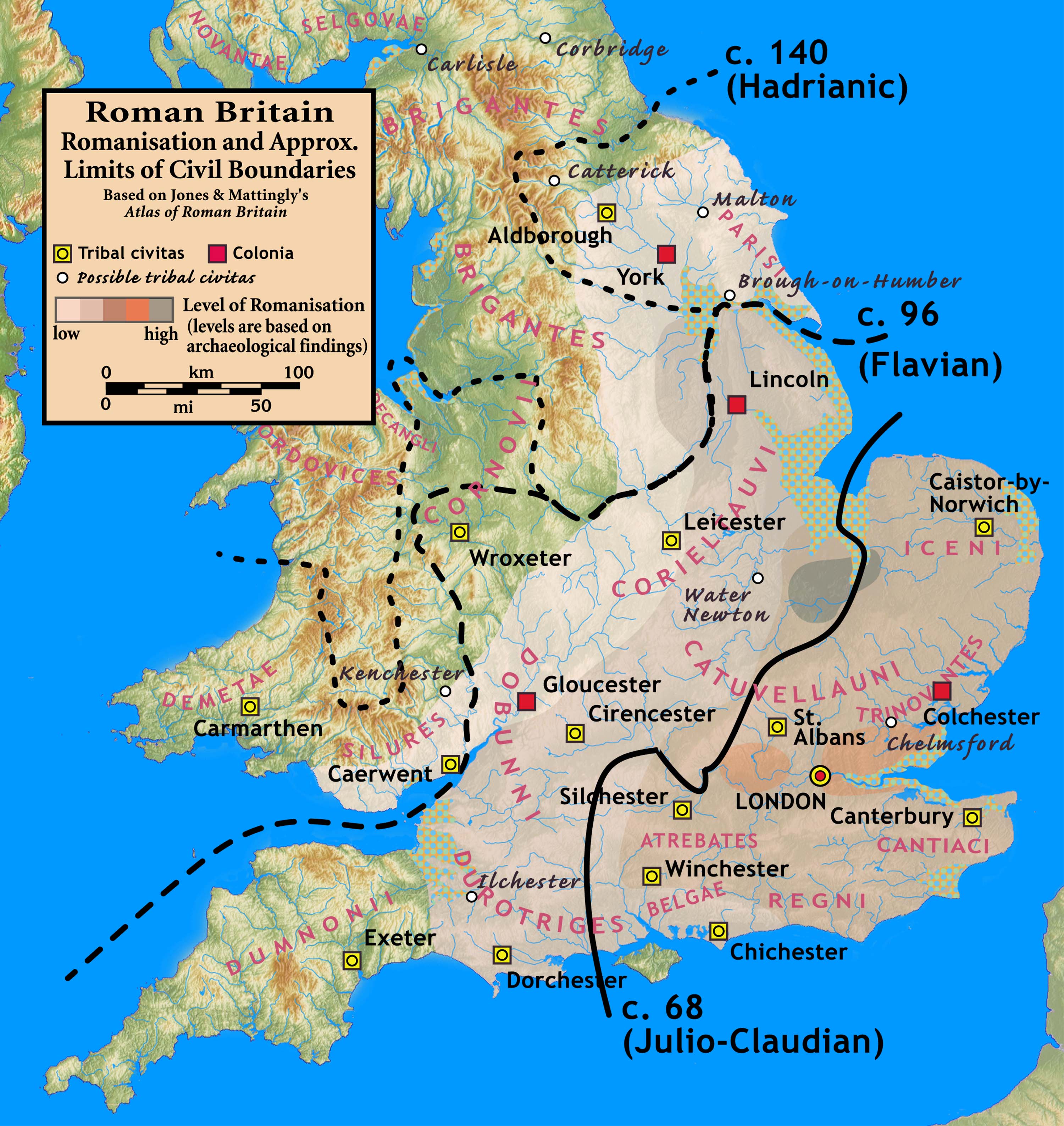|
Woodyates
Woodyates is a hamlet, sometimes considered a village, in the civil parish of Sixpenny Handley and Pentridge, in the county of Dorset, near its border with Wiltshire, in the west of England. History The name means "wood gates" and is believed to refer to the position of Woodyates at the entrance to the wooded area of Cranborne Chase.Charles George Harper, ''The Exeter Road: the Story of the West of England Highway'' (reprinted 2009)p. 96/ref> The topographer James Bell described it thus in 1835: The Roman road (Ackling Dyke) is especially well preserved. In ''Highways and Byways in Dorset'' (1935), Sir Frederick Treves notes that "In no part of Dorset can the actual undisturbed Roman road be seen at greater advantage or for greater extent than about Woodyates." A Romano-British defensive ditch called Bokerley Dyke also runs near the village. In the 18th century, Woodyates was a property of Thomas Pitt. It changed hands in the late 19th century and in the 1950s was the sc ... [...More Info...] [...Related Items...] OR: [Wikipedia] [Google] [Baidu] |
William Day (horseman)
William Day (c. 1823–1908) was a British jockey and trainer. A member of a large and successful racing family, Day had some success as a jockey before setting up as a trainer at Woodyates, Dorset in 1848. In a training career of over thirty years he sent out the winners of three classics and numerous major handicap races before retiring in the 1880s. His best horse was probably the American colt Foxhall. Day was also a gambler who was involved in scandals and clashes with other racing figures. Background Day was one of twelve children of the jockey and trainer John Barham Day, making him the nephew of the jockey Sam Day. William's brothers included John Day, who trained twelve classic winners, and the successful jockeys Samuel and Alfred. Riding career Day began his career as a jockey when in his mid-teens, but had limited success at a time when his uncle Sam was the Day family's favoured jockey. When still in his early twenties, Day was involved in a scandal surroun ... [...More Info...] [...Related Items...] OR: [Wikipedia] [Google] [Baidu] |
The Trafalgar Way
The Trafalgar Way is the name given to the historic route used to carry dispatches with the news of the Battle of Trafalgar overland from Falmouth to the Admiralty in London. The first messenger in November 1805 was Lieutenant John Richards Lapenotière, of , who reached Falmouth on 4 November after a hard voyage in bad weather. He then raced to London bearing the dispatches containing the momentous news of Lord Nelson's victory and death in the Battle of Trafalgar on 21 October 1805. Following the death in action of the Commander in Chief, Admiral Lord Nelson, his deputy, Vice Admiral Cuthbert Collingwood, took command of the British Fleet. Because his ship, the '' Royal Sovereign'', had been dismasted, Collingwood transferred to the undamaged frigate to control operations. Shortly after the battle a severe storm blew up and lasted for several days. Collingwood was faced with the challenge of ensuring the safety and survival of his own and the captured ships: at the same ... [...More Info...] [...Related Items...] OR: [Wikipedia] [Google] [Baidu] |
Wimborne St Giles
Wimborne St Giles is a village and civil parish in east Dorset, England, on Cranborne Chase, north of Wimborne Minster and north of Poole. The village lies within the Shaftesbury estate, owned by the Earls of Shaftesbury, Earl of Shaftesbury. A tributary of the River Allen, formerly known as the Wimborne, snakes its way through the village. The village of St Giles was recorded in the Domesday Book of 1086. Wimborne St Giles was established in 1733, when the St Giles and All Hallows parishes were merged at the request of Anthony Ashley-Cooper, 1st Earl of Shaftesbury. In 2001 the population was 366, served by the village hall, post office, parish church, and a primary school. Recreational enterprises include commercial shooting, a trout farm, and fly fishing on the River Allen. The village is largely agricultural, with residents generally commuting to nearby cities and towns for employment. History Wimborne St Giles is a Hundred (county subdivision), hundred and parish locate ... [...More Info...] [...Related Items...] OR: [Wikipedia] [Google] [Baidu] |
Foxhall (horse)
Foxhall (1879–1904) was an American-bred Thoroughbred racehorse and sire. He was trained in Britain during a racing career that lasted from 1880 until June 1882 during which he ran eleven times and won seven races. As a three-year-old in 1881 he proved himself to be the outstanding colt of the season in Europe, winning the Grand Prix de Paris and becoming the second of only three horses to complete the Autumn Double of the Cesarewitch and the Cambridgeshire. Background Foxhall was bred by the Alexander family at the Woodburn Stud in Kentucky. He was bought as a yearling by James R. Keene, who named the colt after his son. His sire was King Alfonso, a leading American stallion who got the Kentucky Derby winners Fonso and Joe Cotton. In March 1880 Keene sent thirteen horses by transatlantic steamer to be trained in England. These included Lord Murphy and Spendthrift as well as eleven Kentucky-bred two-year-olds. In England, Foxhall was trained by William Day near Woo ... [...More Info...] [...Related Items...] OR: [Wikipedia] [Google] [Baidu] |
Thomas Pitt
Thomas Pitt (5 July 1653 – 28 April 1726) was an English merchant, colonial administrator and politician who served as the president of Fort St. George from 1698 to 1709. Born in Blandford Forum, Dorset, he eventually went to the Indian subcontinent in the service of the English East India Company (EIC) and rose to a senior position in the Presidency of Fort St. George, administering the EIC's affairs within the region. After a lucrative career in India, Pitt returned to England and entered into a political career, being elected six times to the Parliament of Great Britain. His descendants would go on to found a political dynasty, with Pitt's grandson and great-grandson both serving as Prime Minister of Great Britain. Early life Pitt was born at Blandford Forum, Dorset, the second son of Rev. John Pitt (1610–1672), Rector of Blandford St Mary (whose mural monument survives in that church), by his wife Sarah Jay. His second cousin was the poet Rev. Christopher Pitt ( ... [...More Info...] [...Related Items...] OR: [Wikipedia] [Google] [Baidu] |
Bokerley Dyke
Bokerley Dyke, Bokerly Dyke, Bokerley Ditch, is a linear earthwork long on Cranborne Chase in Dorset, partially running along the county's border with Hampshire between Woodyates and Martin. It is part of a Scheduled Monument together with Grim's Ditch and other associated earthworks. Bokerley Dyke was excavated by Augustus Pitt Rivers between 1888 and 1891 and by Philip Rahtz in advance of road widening in 1958. Bokerley Dyke may have originated in the Bronze Age or Early Iron Age and formed a political and cultural boundary.Bokerley Dyke , Pastscape It was cut through by a Roman Road ( Ackling Dyke running between |
Romano-British
The Romano-British culture arose in Britain under the Roman Empire following the Roman conquest in AD 43 and the creation of the province of Britannia. It arose as a fusion of the imported Roman culture with that of the indigenous Britons, a people of Celtic language and custom. Scholars such as Christopher Snyder believe that during the 5th and 6th centuries – approximately from 410 when the Roman legions withdrew, to 597 when St Augustine of Canterbury arrived – southern Britain preserved an active sub-Roman culture that survived the attacks from the Anglo-Saxons and even used a vernacular Latin when writing. Arrival of the Romans Roman troops, mainly from nearby provinces, invaded in AD 43, in what is now part of England, during the reign of Emperor Claudius. Over the next few years the province of Britannia was formed, eventually including the whole of what later became England and Wales and parts of Scotland.Kinder, H. & Hilgemann W. ''The Penguin Atlas of Wo ... [...More Info...] [...Related Items...] OR: [Wikipedia] [Google] [Baidu] |
Horatio Nelson, 1st Viscount Nelson
Horatio Nelson, 1st Viscount Nelson, 1st Duke of Bronte ( – 21 October 1805) was a Royal Navy officer whose leadership, grasp of strategy and unconventional tactics brought about a number of decisive British naval victories during the French Revolutionary and Napoleonic Wars. He is widely regarded as one of the greatest naval commanders in history. Nelson was born into a moderately prosperous Norfolk family and joined the navy through the influence of his uncle, Maurice Suckling, a high-ranking naval officer. Nelson rose rapidly through the ranks and served with leading naval commanders of the period before obtaining his own command at the age of 20, in 1778. He developed a reputation for personal valour and a firm grasp of tactics, but suffered periods of illness and unemployment after the end of the American War of Independence. The outbreak of the French Revolutionary Wars allowed Nelson to return to service, where he was particularly active in the Mediterranean Sea. He f ... [...More Info...] [...Related Items...] OR: [Wikipedia] [Google] [Baidu] |
George III
George III (George William Frederick; 4 June 173829 January 1820) was King of Great Britain and King of Ireland, Ireland from 25 October 1760 until his death in 1820. The Acts of Union 1800 unified Kingdom of Great Britain, Great Britain and Kingdom of Ireland, Ireland into the United Kingdom of Great Britain and Ireland, with George as its king. He was concurrently Duke and Prince-elector of Electorate of Hanover, Hanover in the Holy Roman Empire before becoming King of Hanover on 12 October 1814. He was the first monarch of the House of Hanover who was born in Great Britain, spoke English as his first language, and never visited Hanover. George was born during the reign of his paternal grandfather, George II of Great Britain, King George II, as the first son of Frederick, Prince of Wales, and Princess Augusta of Saxe-Gotha. Following his father's death in 1751, Prince George became heir apparent and Prince of Wales. He succeeded to the throne on George II's death in 1760. Th ... [...More Info...] [...Related Items...] OR: [Wikipedia] [Google] [Baidu] |
John Richards Lapenotière
Captain John Richards Lapenotière (1770 – 19 January 1834) was a Royal Navy officer who served in the French Revolutionary and Napoleonic Wars. As the captain of the schooner HMS ''Pickle'', he observed the Battle of Trafalgar, participated in post-battle rescue operations and carried dispatches of the victory and Horatio Nelson's death to England. Early life John Richards Lapenotière was born in 1770 in Ilfracombe, Devon into a Huguenot family which came to England in 1688 with William of Orange. Lapenotière came from a military family: his great grandfather, Frederick La Penotiere, served in The Royal Regiment of Foot of Ireland under the Duke of Marlborough in the War of the Spanish Succession and received a bounty for his service at the 1704 Battle of Blenheim. Service career John followed his father, Frederick, into naval service, joining his father's ship unofficially, at just ten years old. At fifteen he enlisted with Nathaniel Portlock on a commercial exp ... [...More Info...] [...Related Items...] OR: [Wikipedia] [Google] [Baidu] |




